Last updated: 7th January 2022
Table of Contents
Getting to Stellenbosch on the stunning R44 coastal road
After whale watching in Hermanus the next stop on our tour of South Africa was Stellenbosch – the country’s famous wine producing region. But first we had to get there. The route along the R44 (Clarence Drive) coastal road is just stunning, the best part is when you can see False Bay with the mountain backdrop. This is South Africa’s biggest bay, we stopped at a viewpoint and looked for sharks which are common here whilst reading all about the shark flag warning system.
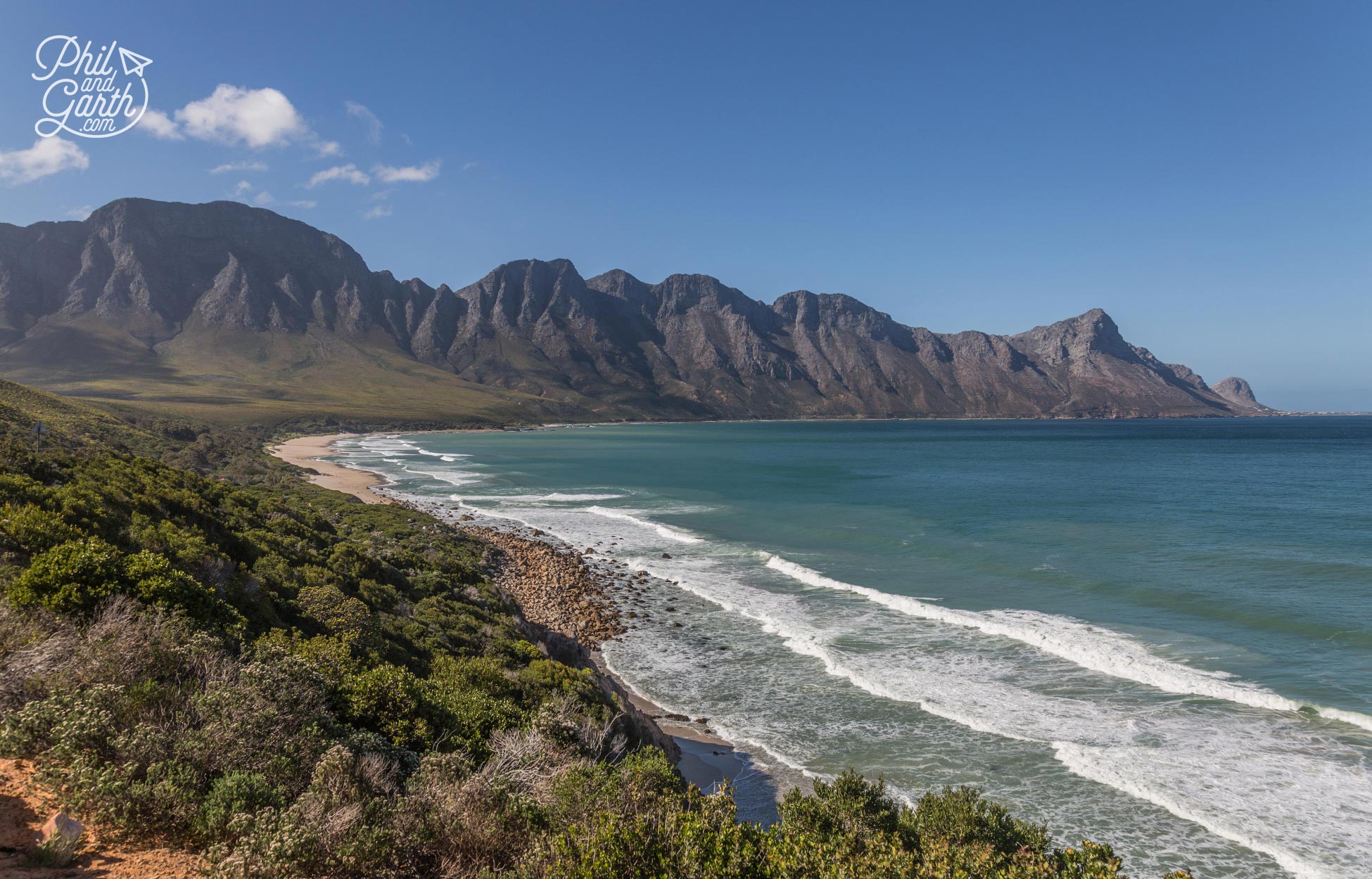
Roadside view of False Bay on the R44 just before Gordon’s Bay
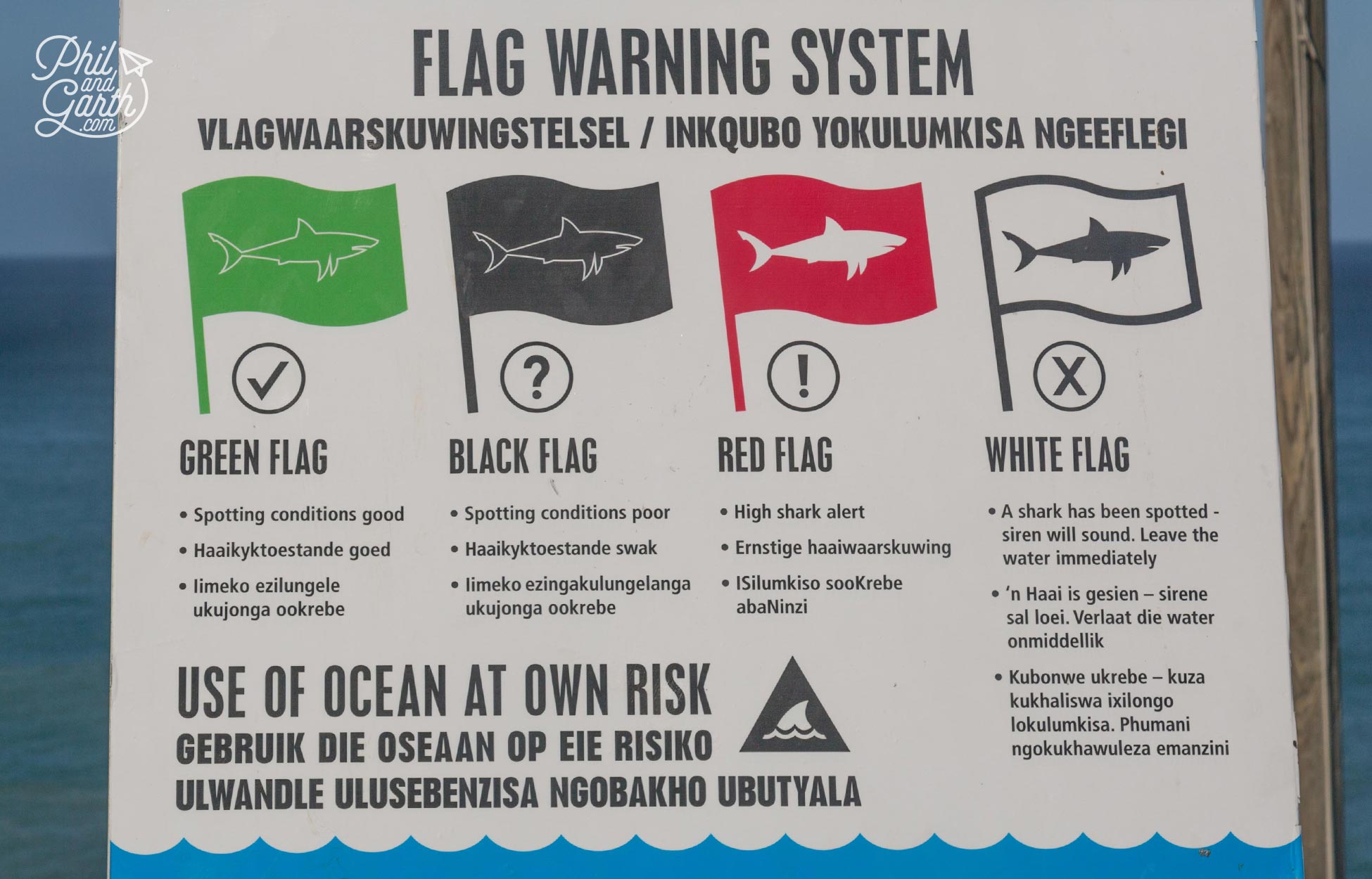
South Africa’s Shark flag warning system
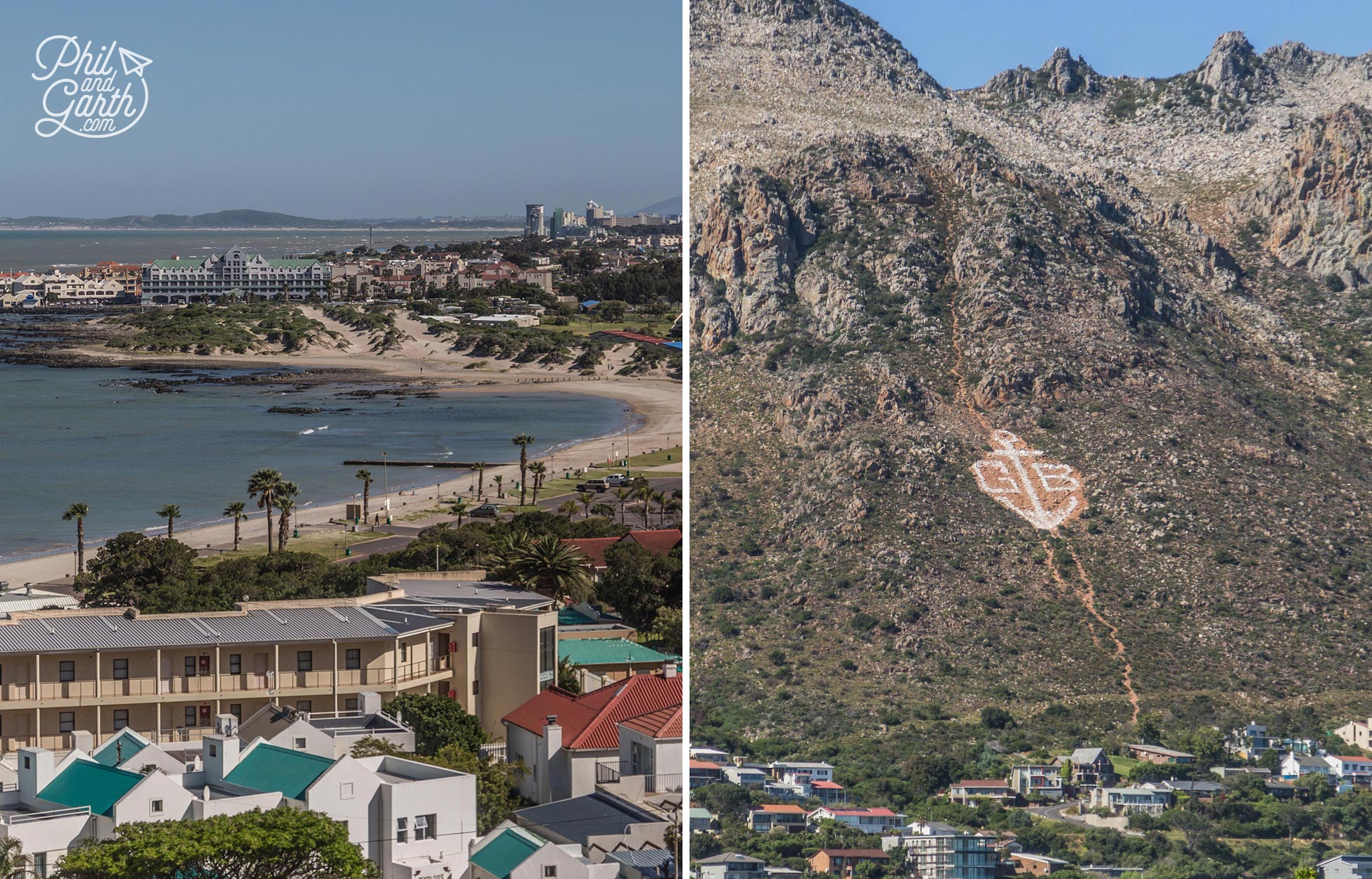
Gordon’s Bay South Africa. We saw seals in the water here.
Historic Stellenbosch
Stellenbosch is the second oldest town in South Africa, it dates back to 1679. It’s situated in the heart of the Western Cape Winelands, surrounded by mountains and vineyards. We thought the town is very elegant full of delightful Dutch architecture from Stellenbosch’s colonial past. The shady oak tree lined streets have old Cape Dutch white gabled homes and Victorian and Georgian mansions.
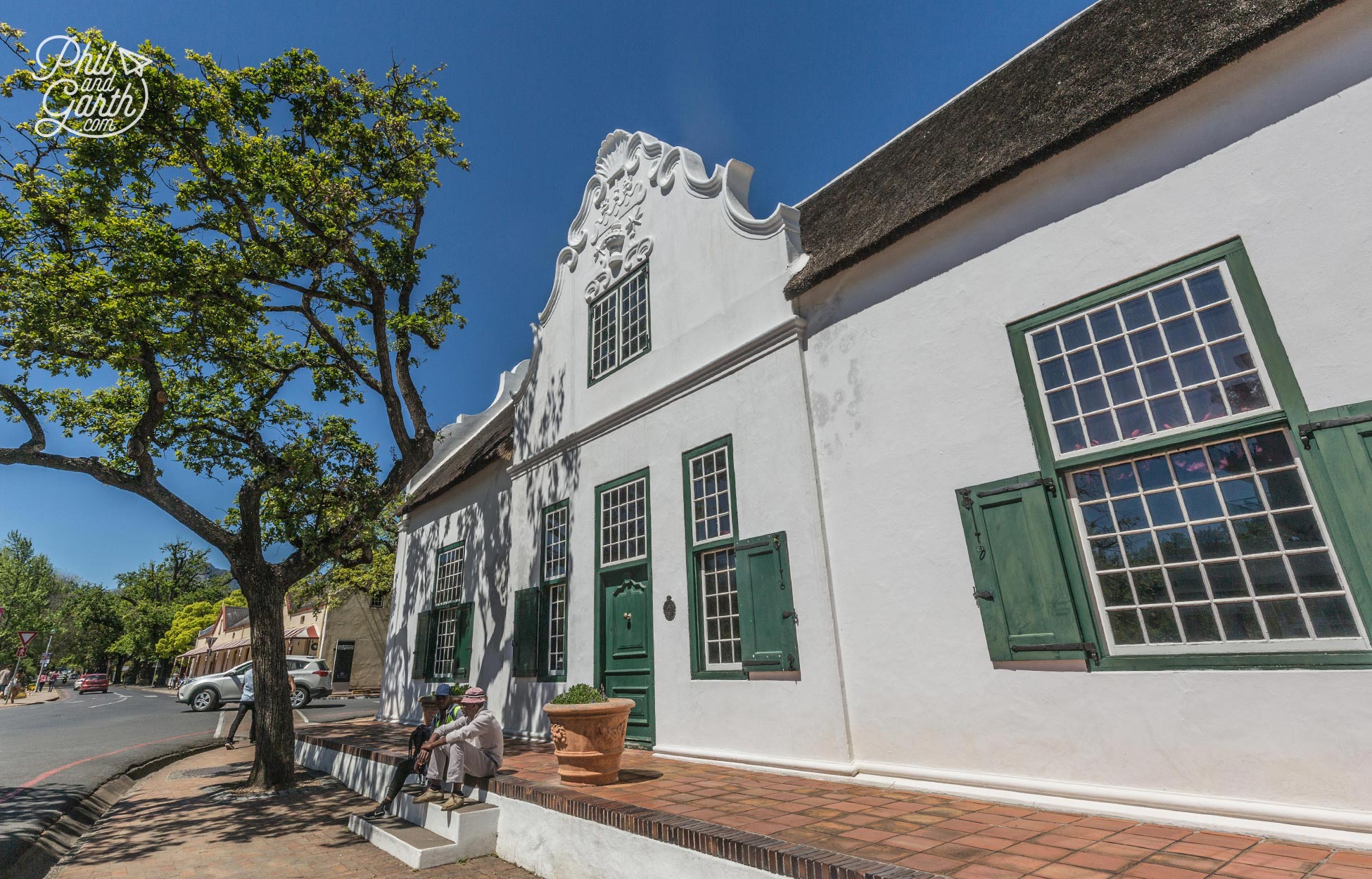
Historic Stellenbosch – South Africa’s second oldest town dates back to 1679
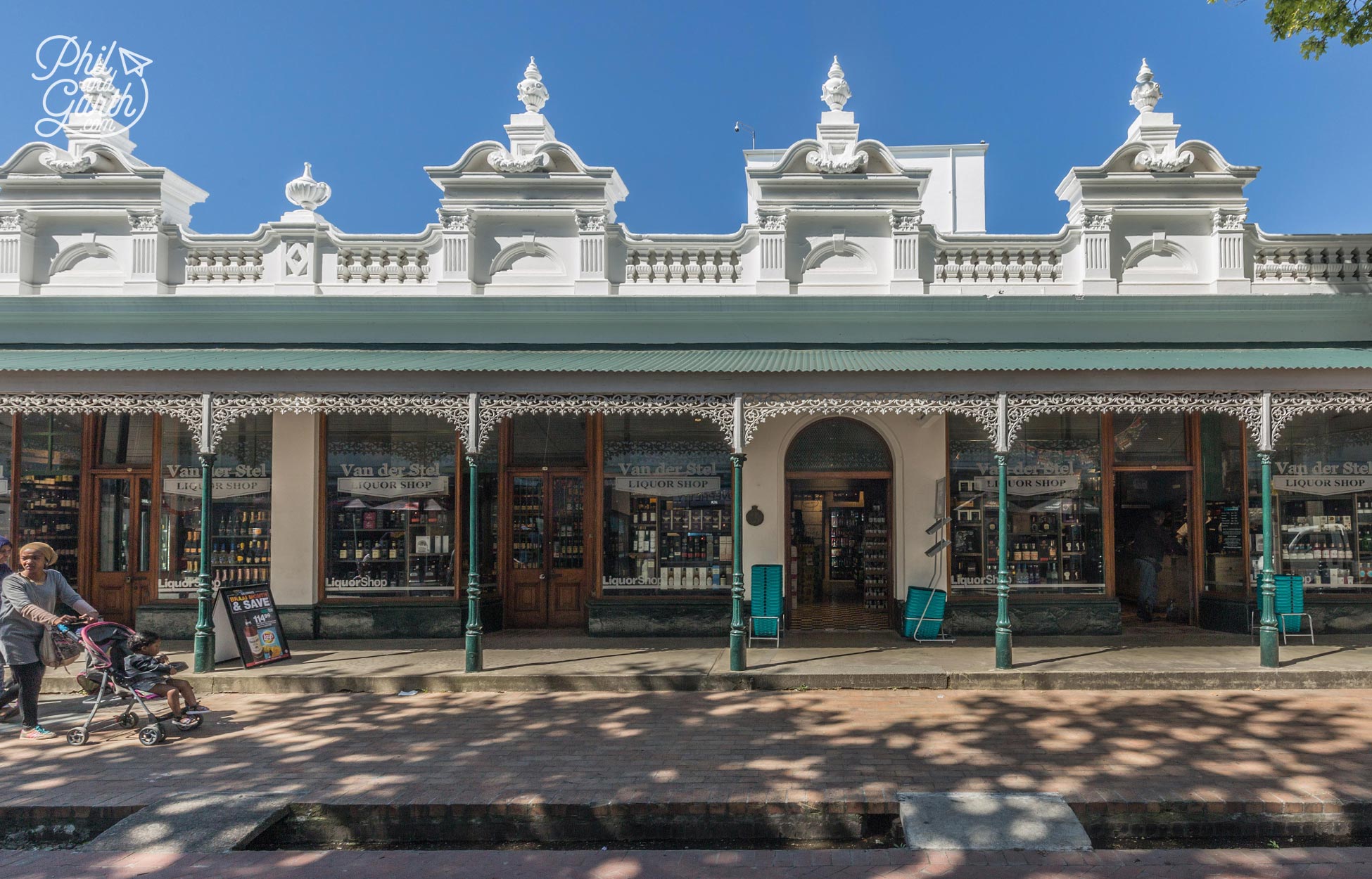
A Victorian looking row of shops
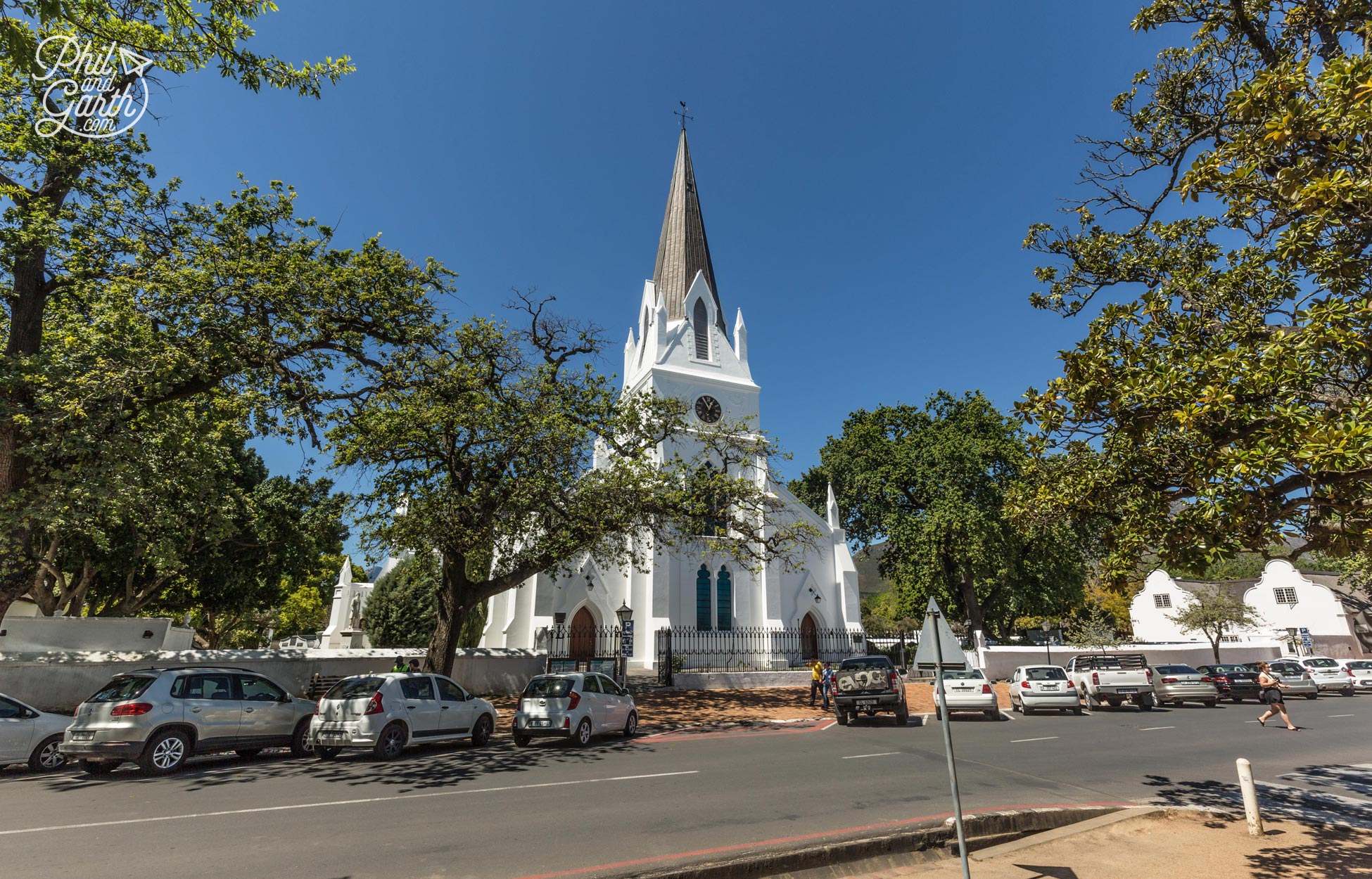
Lovely Oak lined streets of Stellenbosch
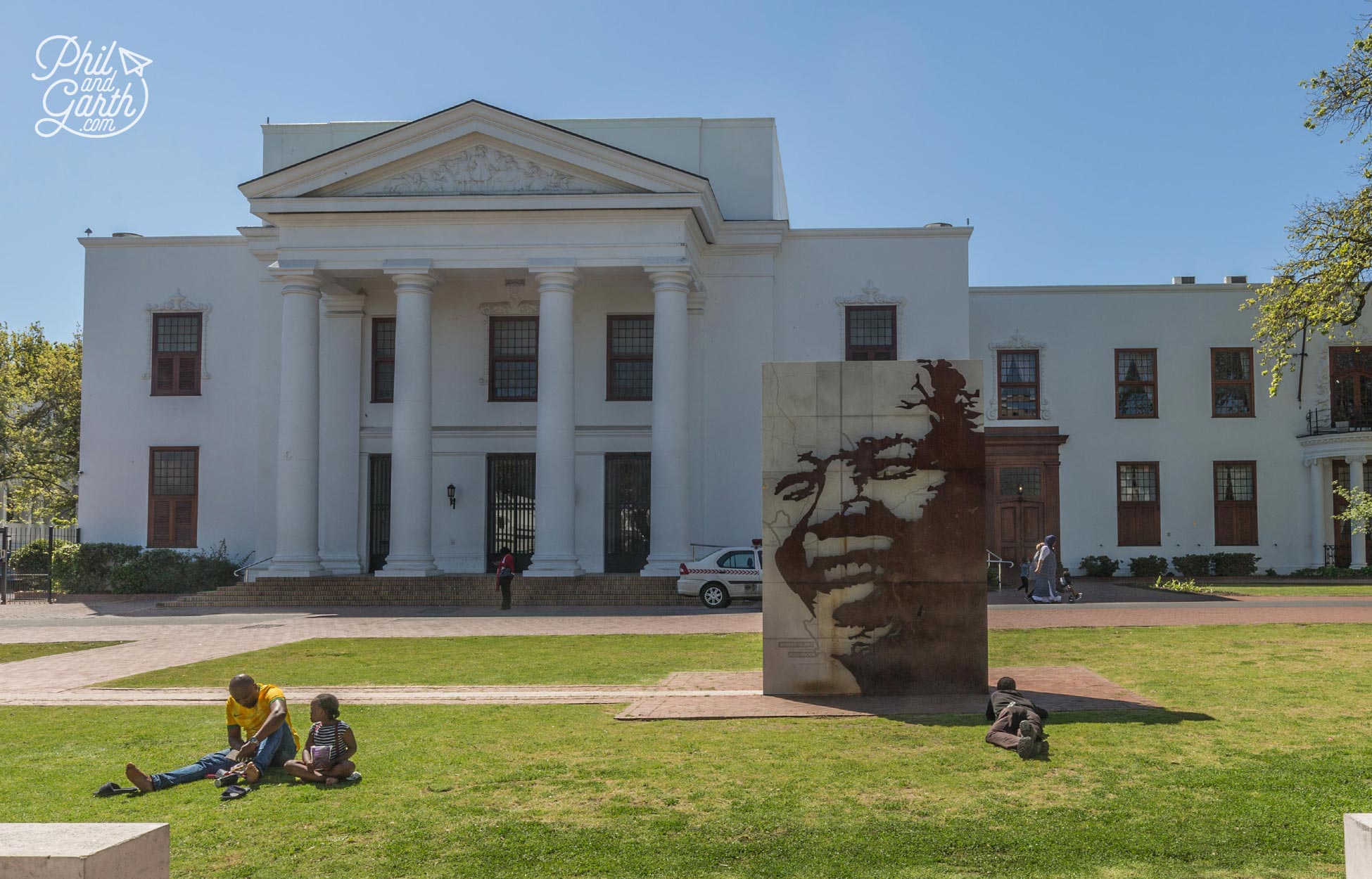
Stellenbosch is a university town
Stellenbosch is a university town and has a youthful vibe from the the mix of young people living here. It was great to see that it was really mixed and diverse too, unlike Johannesburg which appeared to have a visual divide between black and white people. There’s lots of modern shops and some charming cafes and bistros. Stellenbosch is quite small so you can easily walk around.
Stellenbosch Village Museum
We visited The Stellenbosch Village Museum – an interesting place to learn more about Cape Dutch architecture. The museum comprises 4 immaculately restored houses and gardens from 4 different periods. Guides are dressed in period costume and gave us information on the furniture and how people lived during each period.
- 1. Schreuder House (1690 to 1720) is the oldest documented town house in the whole of South Africa from 1709.
- 2. Bletterman House (1750 to 1780) built in 1789 is typical home of a wealthy family. Garth loved the scent of the established rosemary hedges in the garden.
- 3. Grosvenor House (1800 to 1830) built in 1782 is a fine example of a two storied, flat roofed patrician town house.
- 4. O.M. Bergh House (1840 to 1870) is typical of a Stellenbsoch home from the 19th century. Features include the fancy wallpaper.
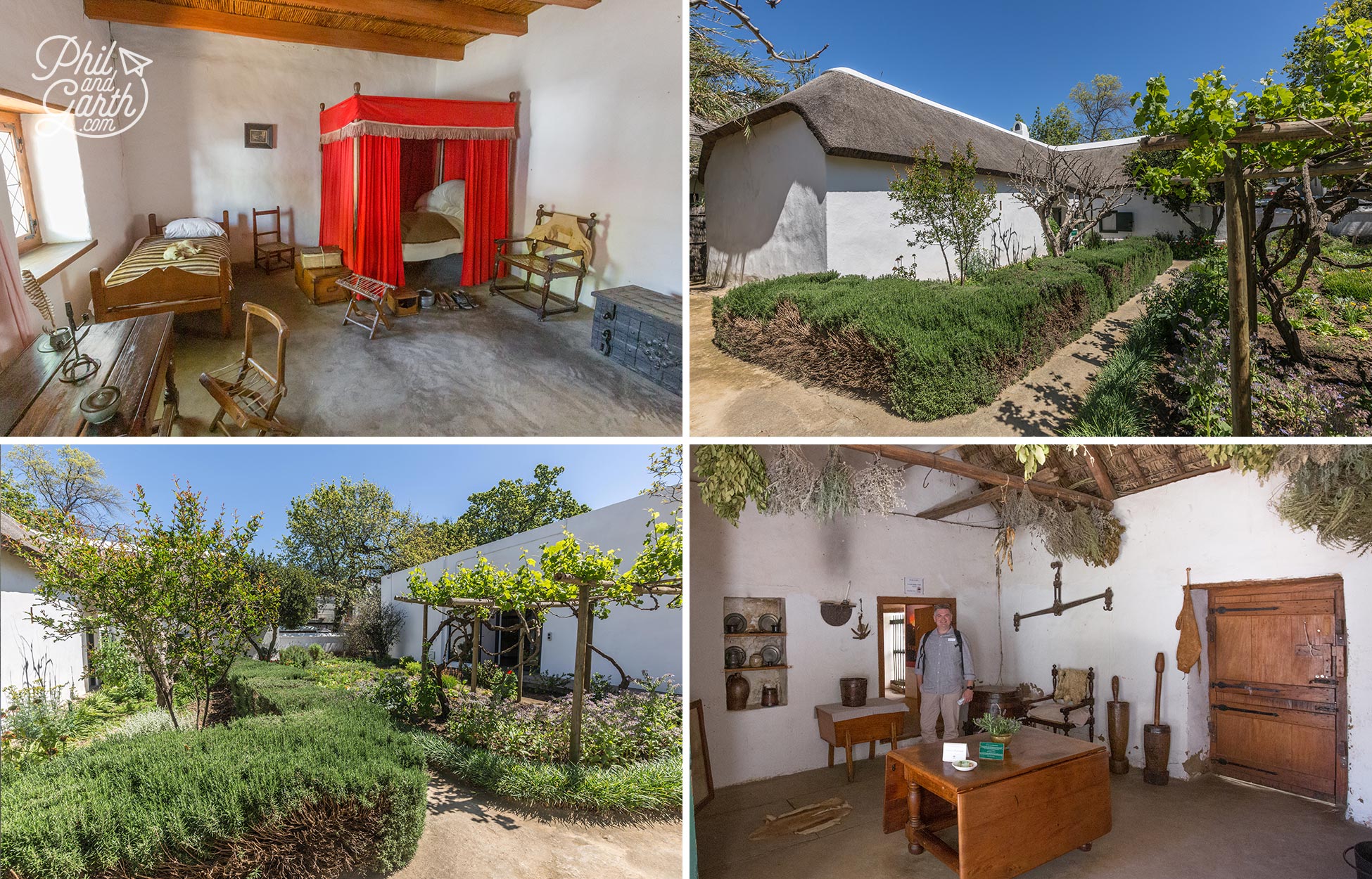
Schreuder House at the Stellenbosch Museum
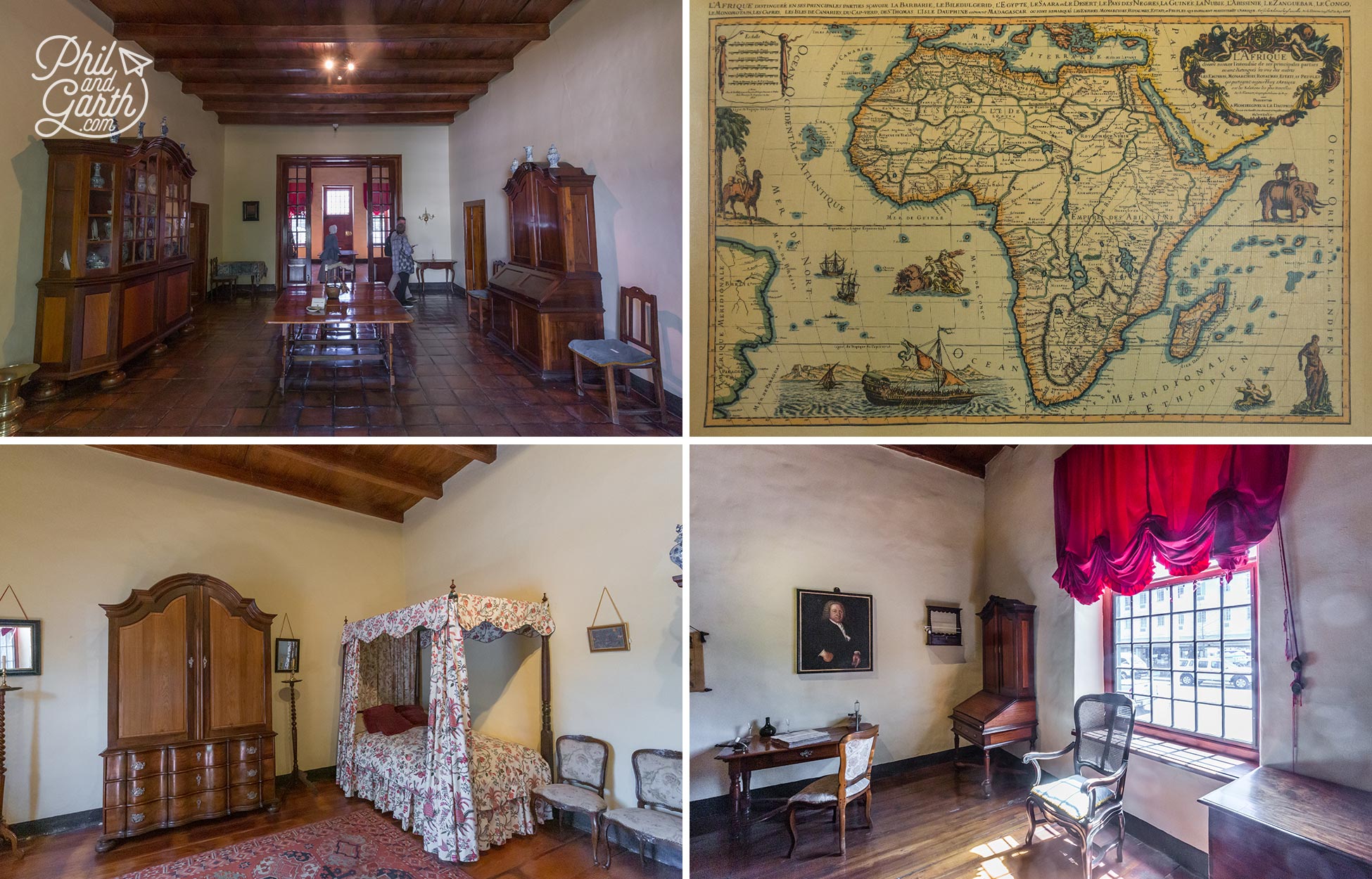
The interior of Bletterman House
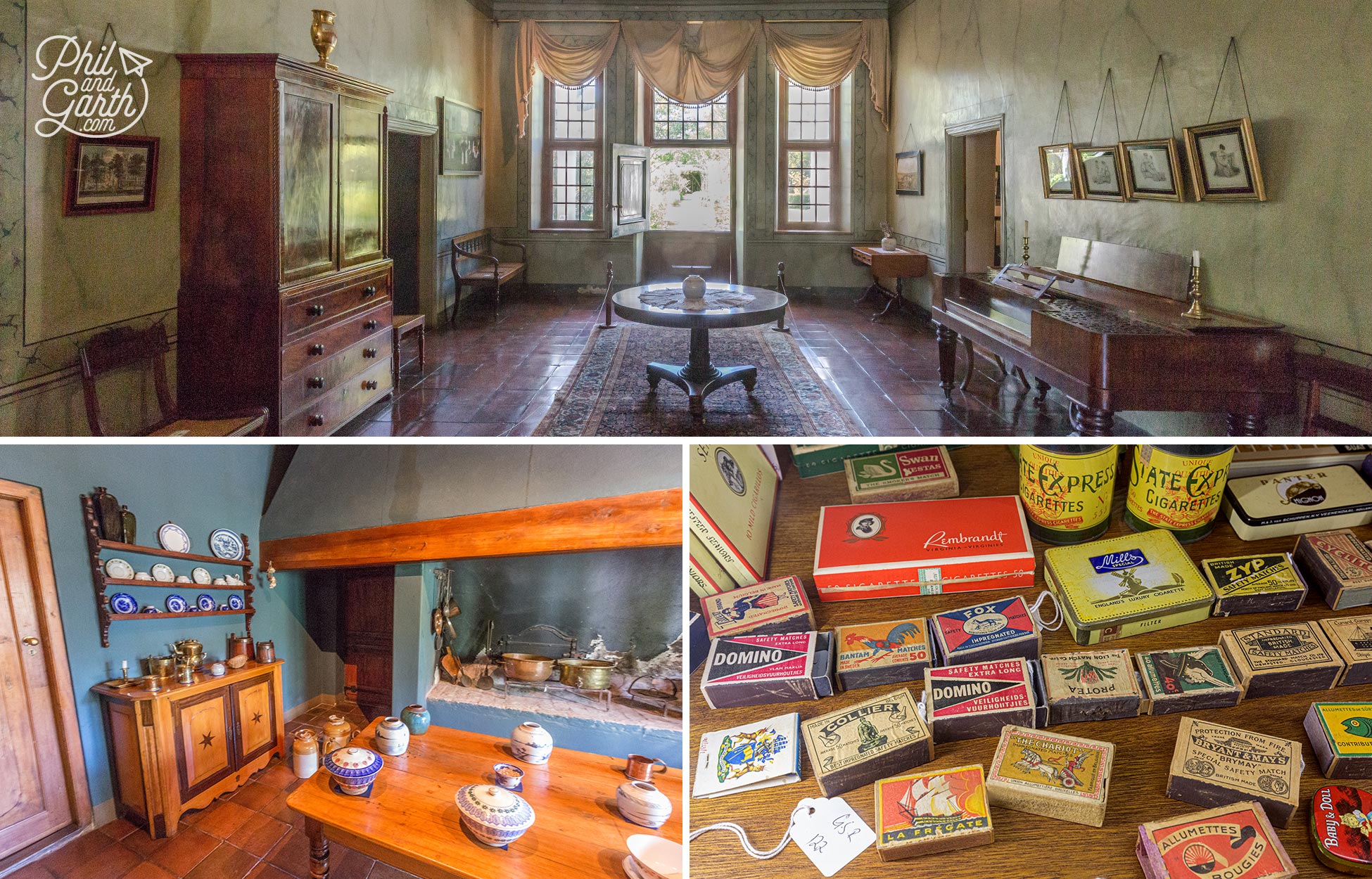
Interior of Grosvenor House
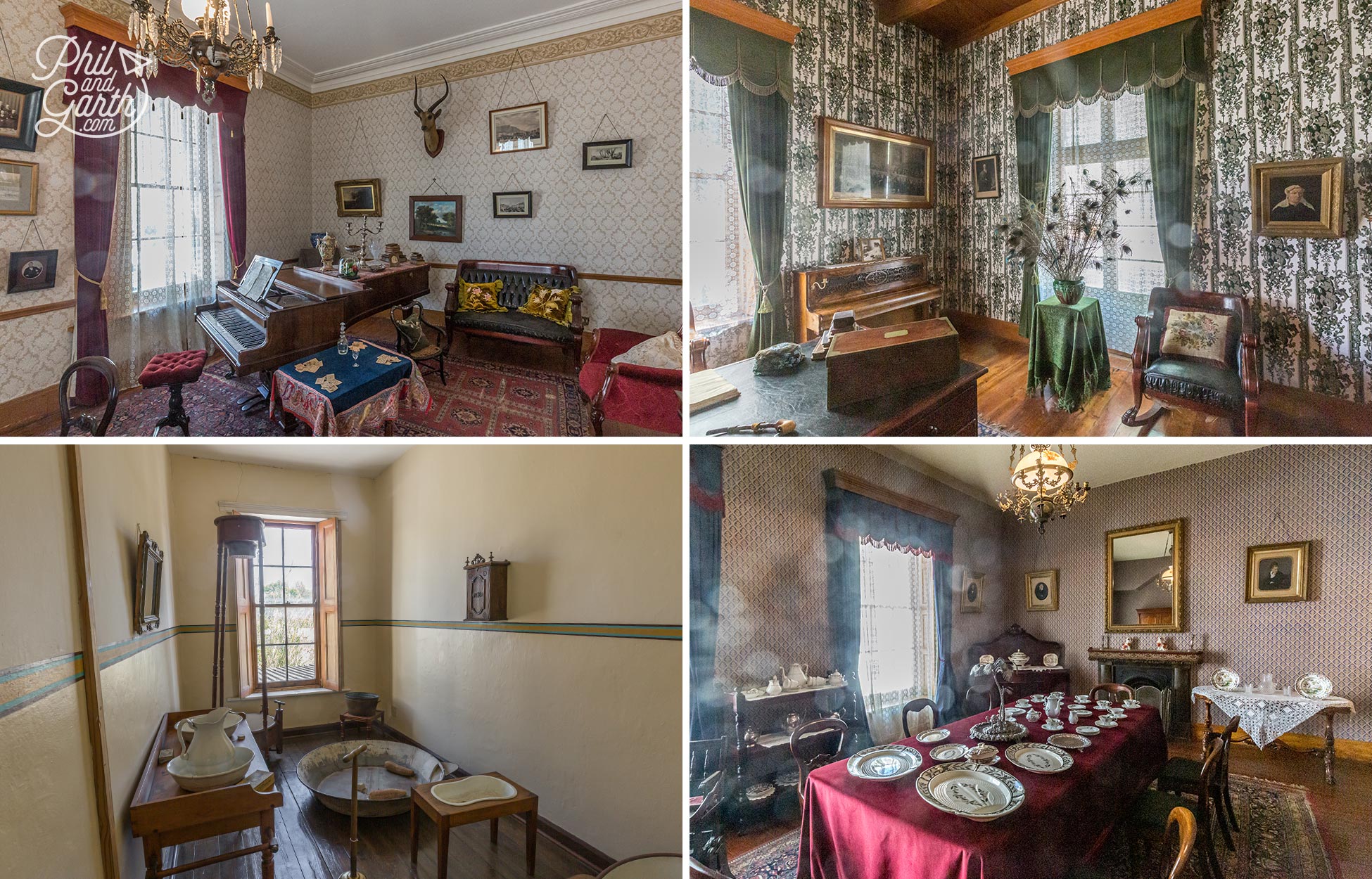
Interior of OM Bergh House
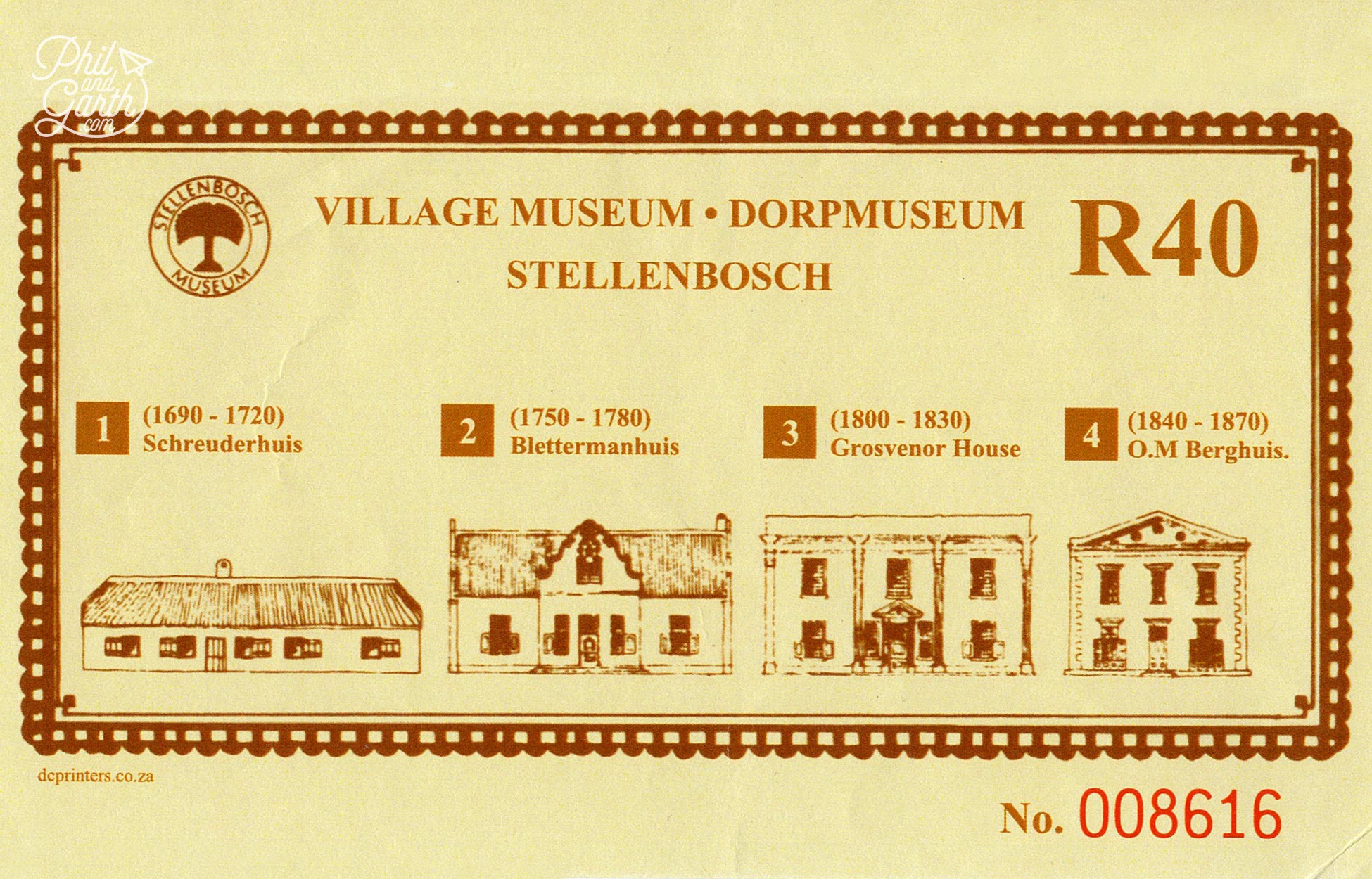
The ticket shows the exterior profile of house
Eat at De Warenmarkt
We had lunch at De Warenmarkt which is inside a delightful old building, it’s stylish and is made up of different food vendors. The menu has lots of artisan food, we ordered bitterballen and halloumi dishes. Phil had a glass of Stellenbosch wine and Garth had a craft beer from the Stellenbrau brewery. (Stellenbosch has loads of micro-breweries too)
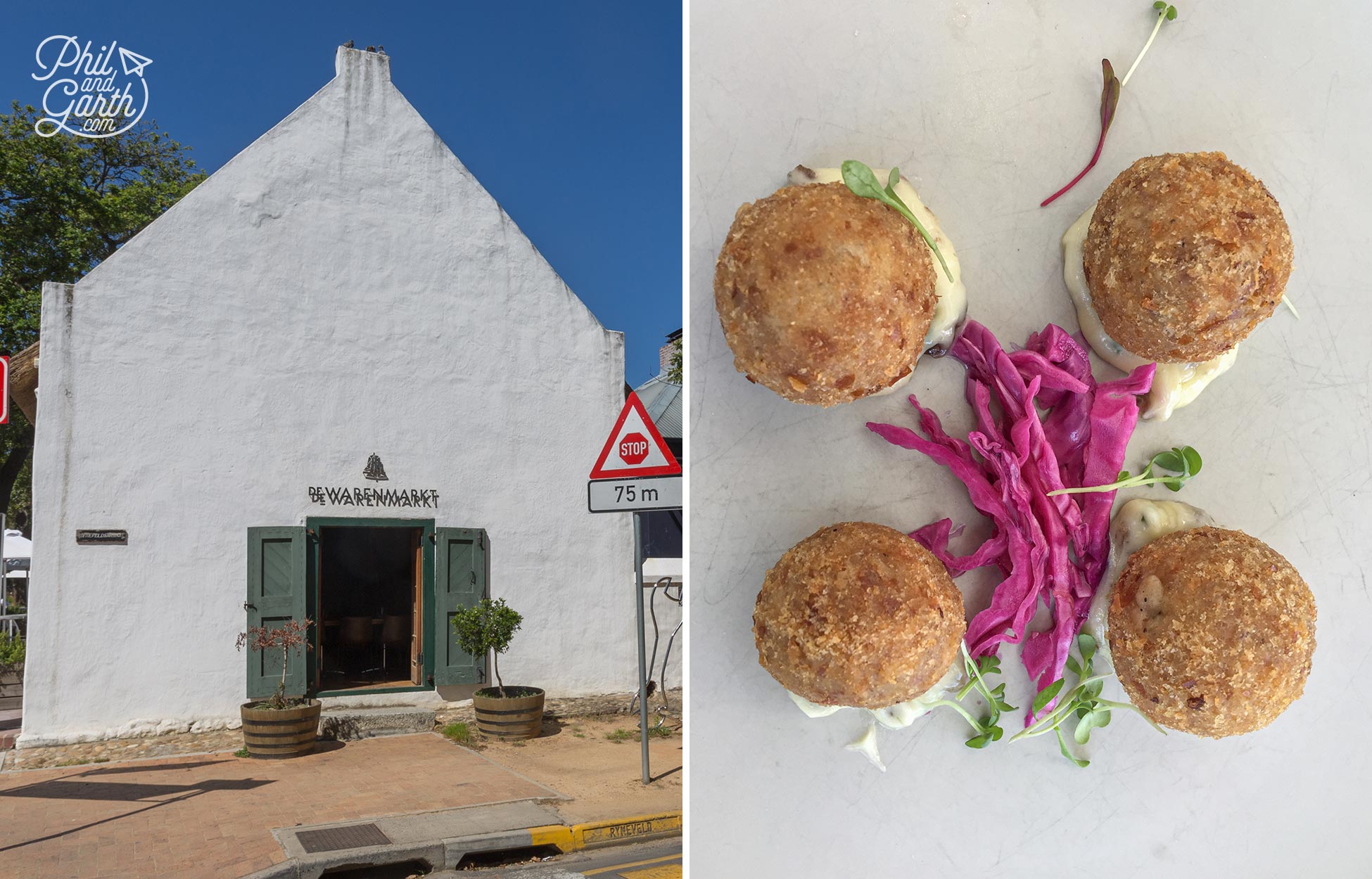
Our portion of bitterballen at De Warenmarkt
Wine Tasting in the Stellenbosch Winelands
After discovering the town we spent the rest of the day hopping between a couple of wine estates amongst the rolling vineyards to sample some world class wines! Phil was excited about this part of our tour of South Africa because he LOVES wine!
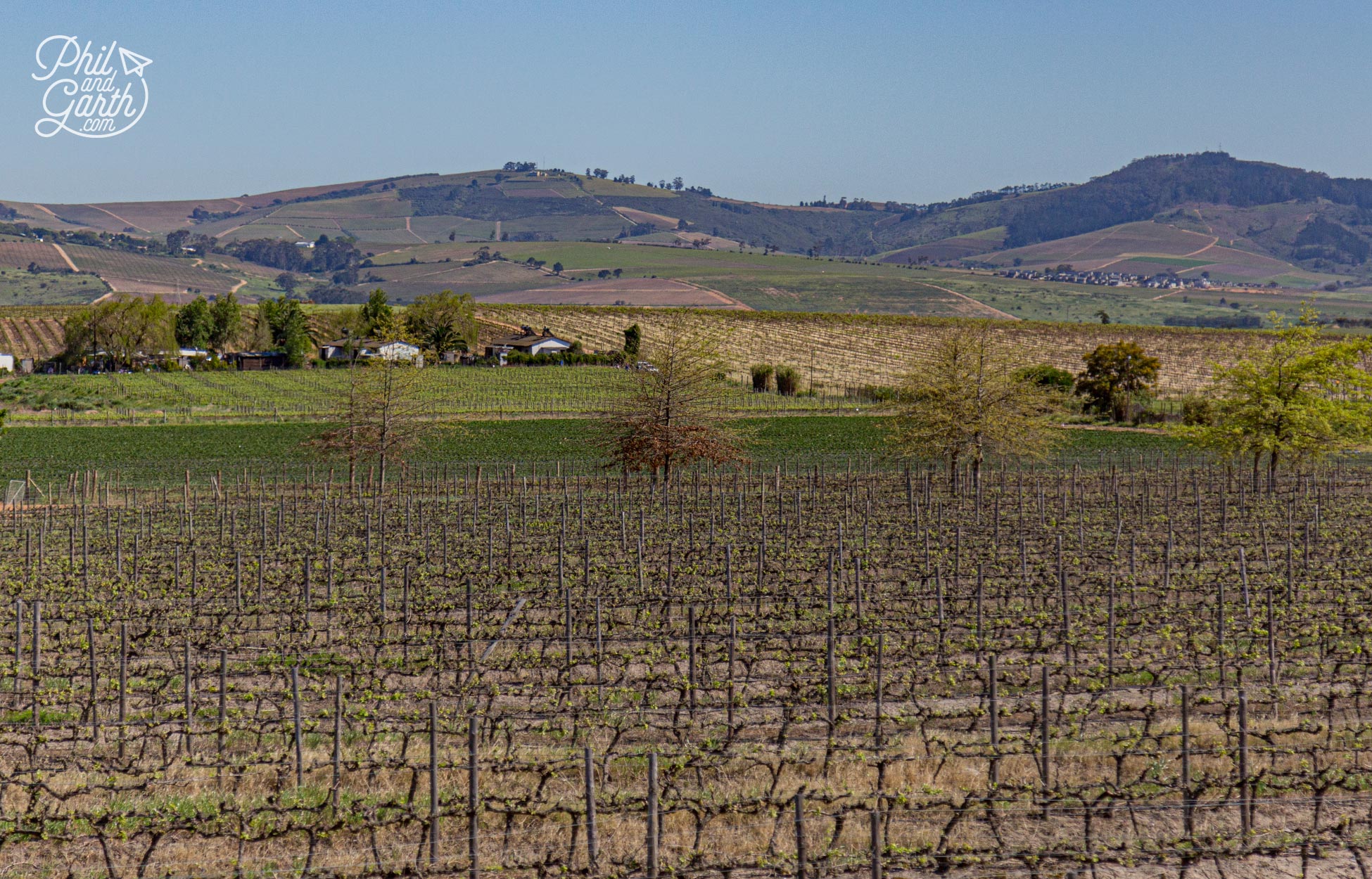
Stellenbosch is considered the centre of the ‘Cape Winelands’
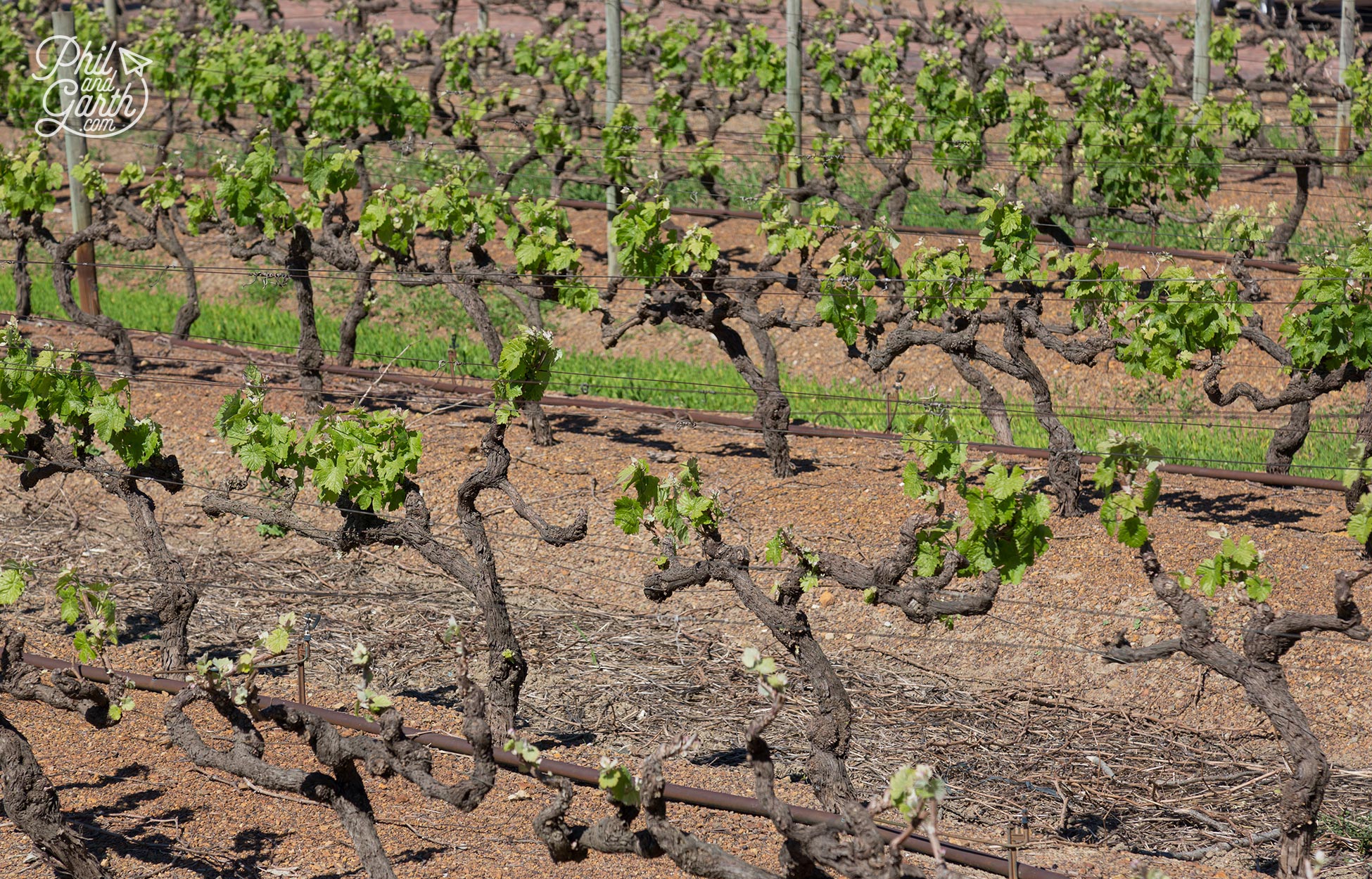
Miles and miles of plant vines in Stellenbosch
Stellenbosch is considered the centre of the ‘Cape Winelands’ which also comprises Franschhoek and Paarl Valleys. The Winelands go on for miles and miles and is South Africa’s largest wine making region dating back to the 1600s. The soil is rich and the area has a mild Mediterranean climate which makes it perfect for growing grapes (and vegetables) and producing wine. We would have loved to spend a few days working our way through the winelands, but we only had a day!
In Stellenbosch there are over 150 wine farms and estates to choose from, some of them are in old Dutch manor houses. They all look great because of their picturesque settings against the mountain backdrops. Some of the wineries have restaurants and delicatessens selling olive oil, balsamic vinegar and honey which Stellenbosch is also renowned for.
Tokara Wine Tasting
Our first wine estate was Tokara, it was fabulously upmarket with a fine art collection as you entered the building and views of the wine making gear through the glass windows. It also had a huge fireplace which must be gorgeous in winter. The vistas of the Simonsberg Mountains and surrounding vineyards from here are incredible.
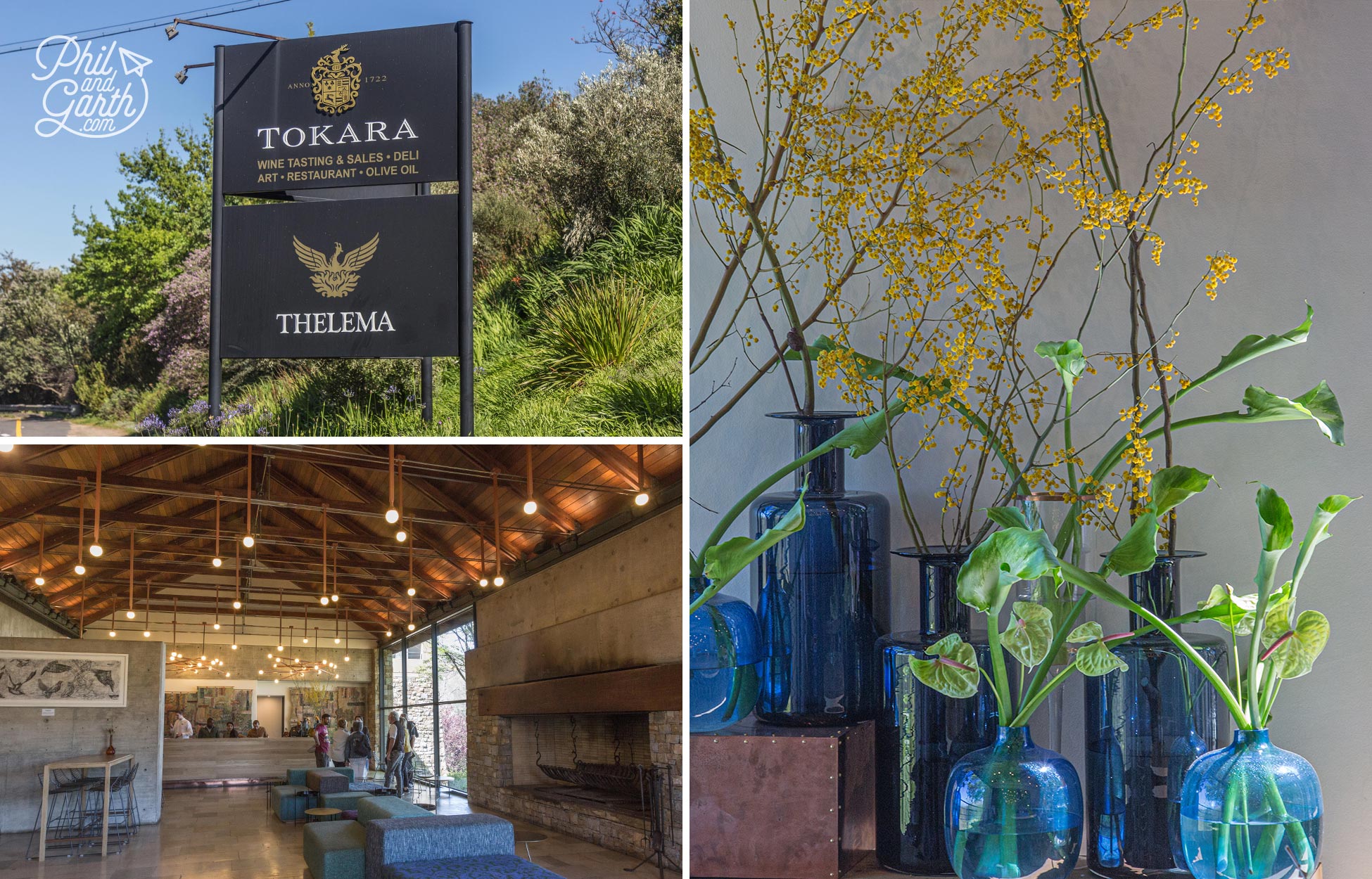
Tokara wine estate, Stellenbosch
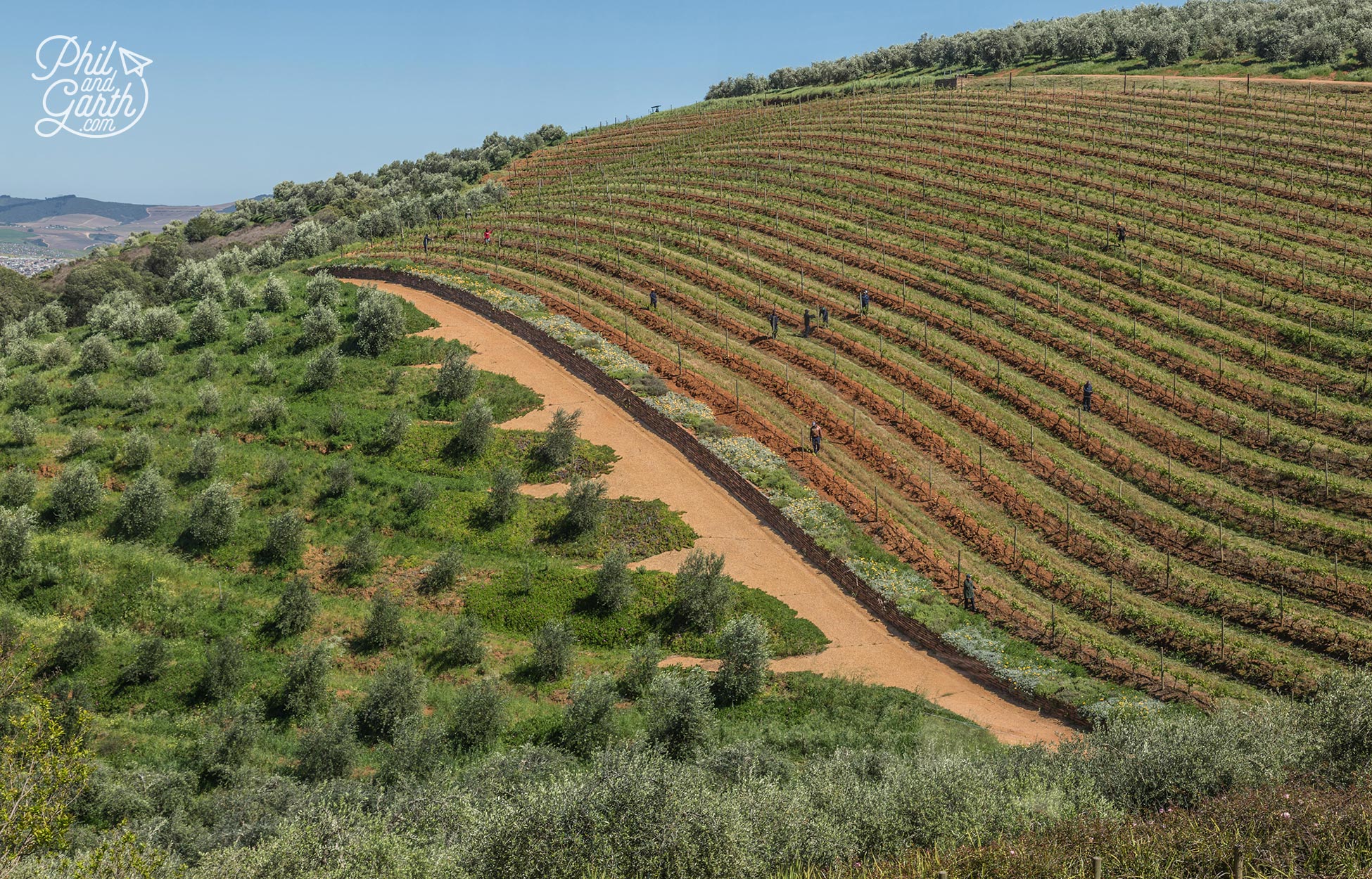
The Tokara estate’s stunning landscape
Tokara is famous for making Chardonnay and Sauvignon Blanc. We tasted 4 wines – Sauvignon Blanc, Chardonnay, Cabernet Sauvignon and the Stellenbosch Syrah. Garth’s not a big fan of red wine, so Phil got some extra tastings!
Phil liked Cabernet Sauvignon, our waiter said the 2015 bottles were the best, because it was the best year ever for red in South Africa because there was lots of sun and rain, so plants were not stressed. They gave us an order form so you could order for wine to be shipped home, a good idea to save on hand luggage space, but we thought they were missing a trick by not having a shop so we could buy a bottle or two there and then as we would have done.
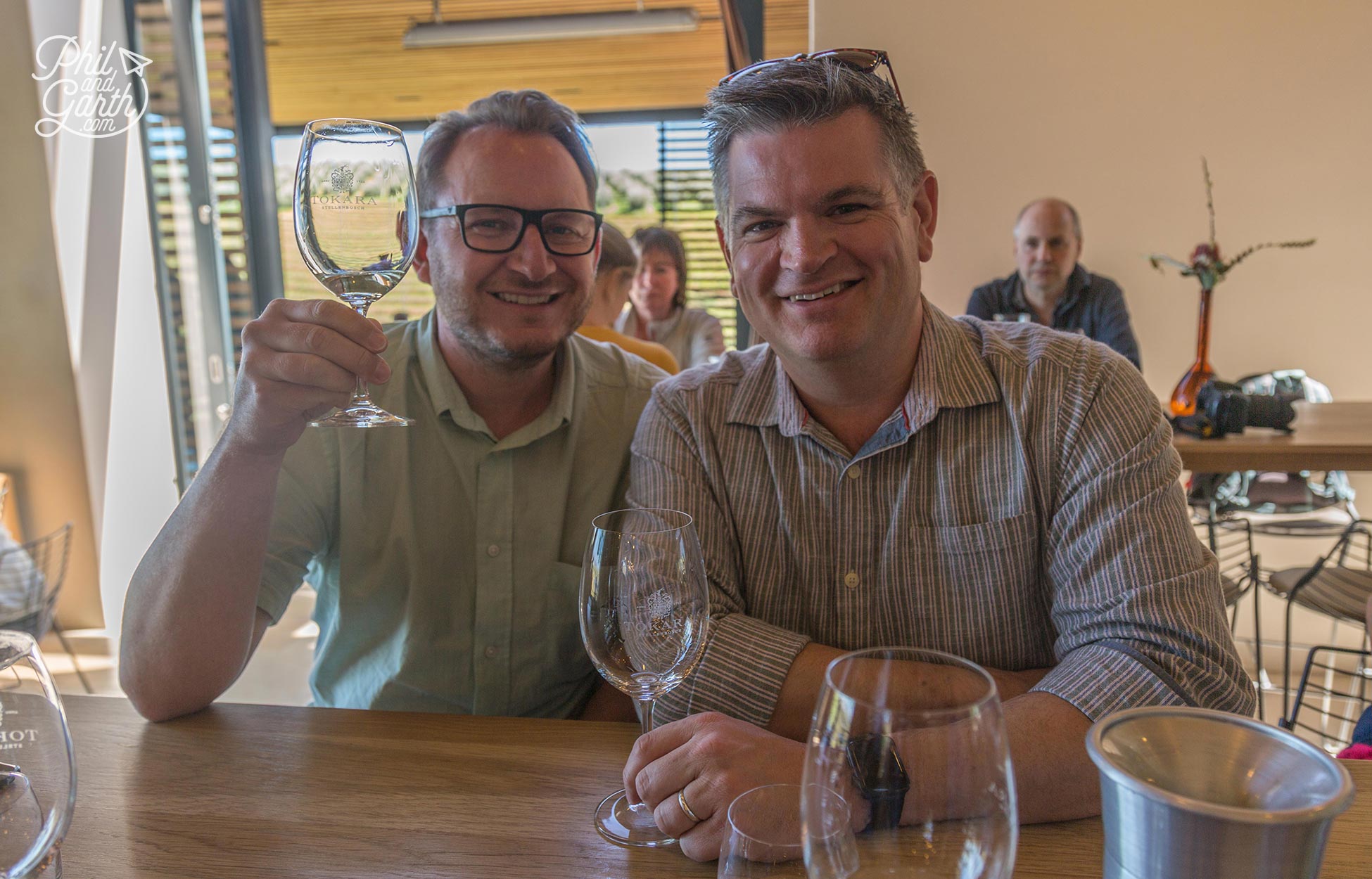
Garth and Phil enjoying the wine tasting at Tokara
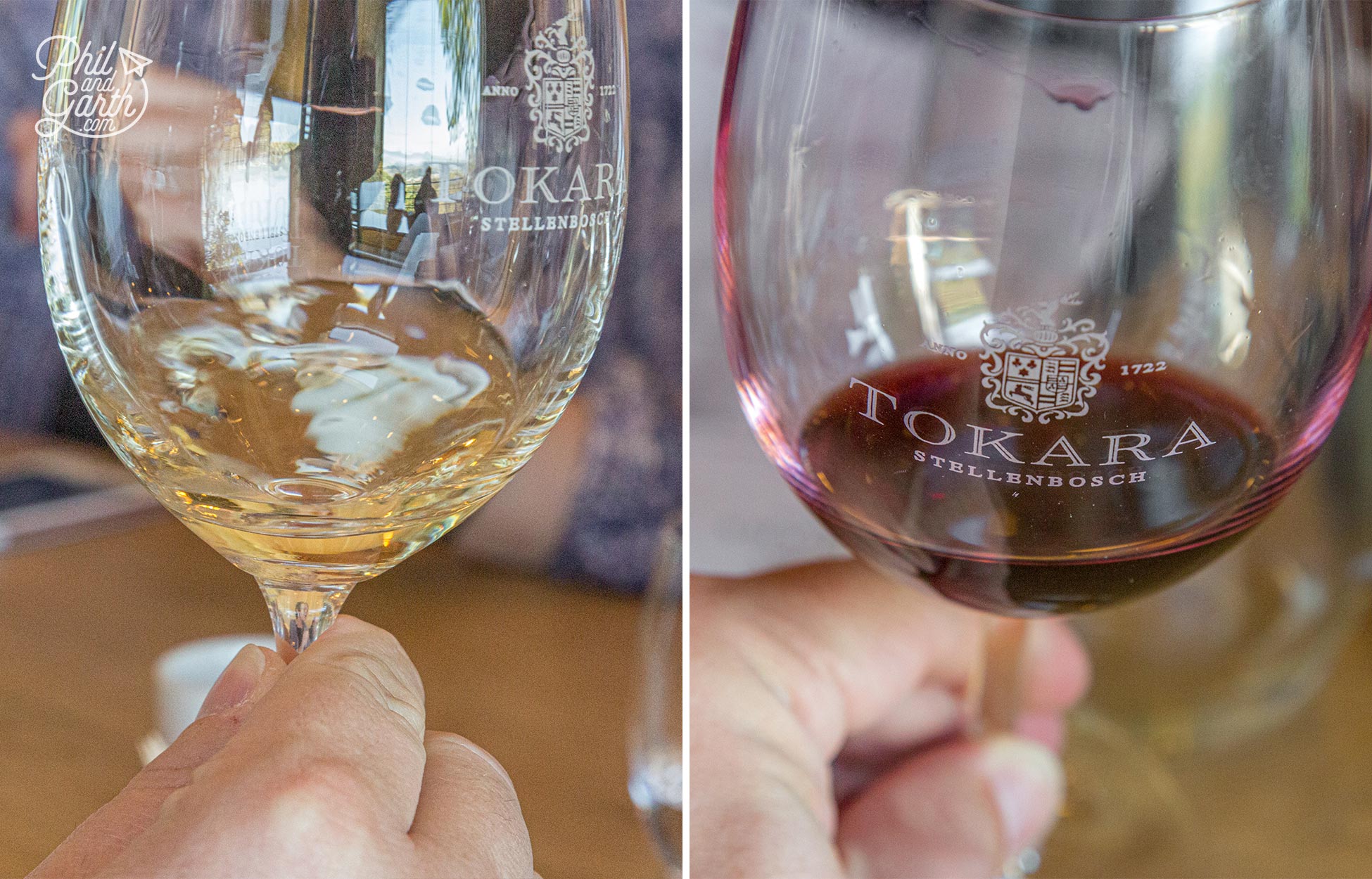
Wine tasting at Tokara Stellenbosch
Beyerskloof Wine Tasting
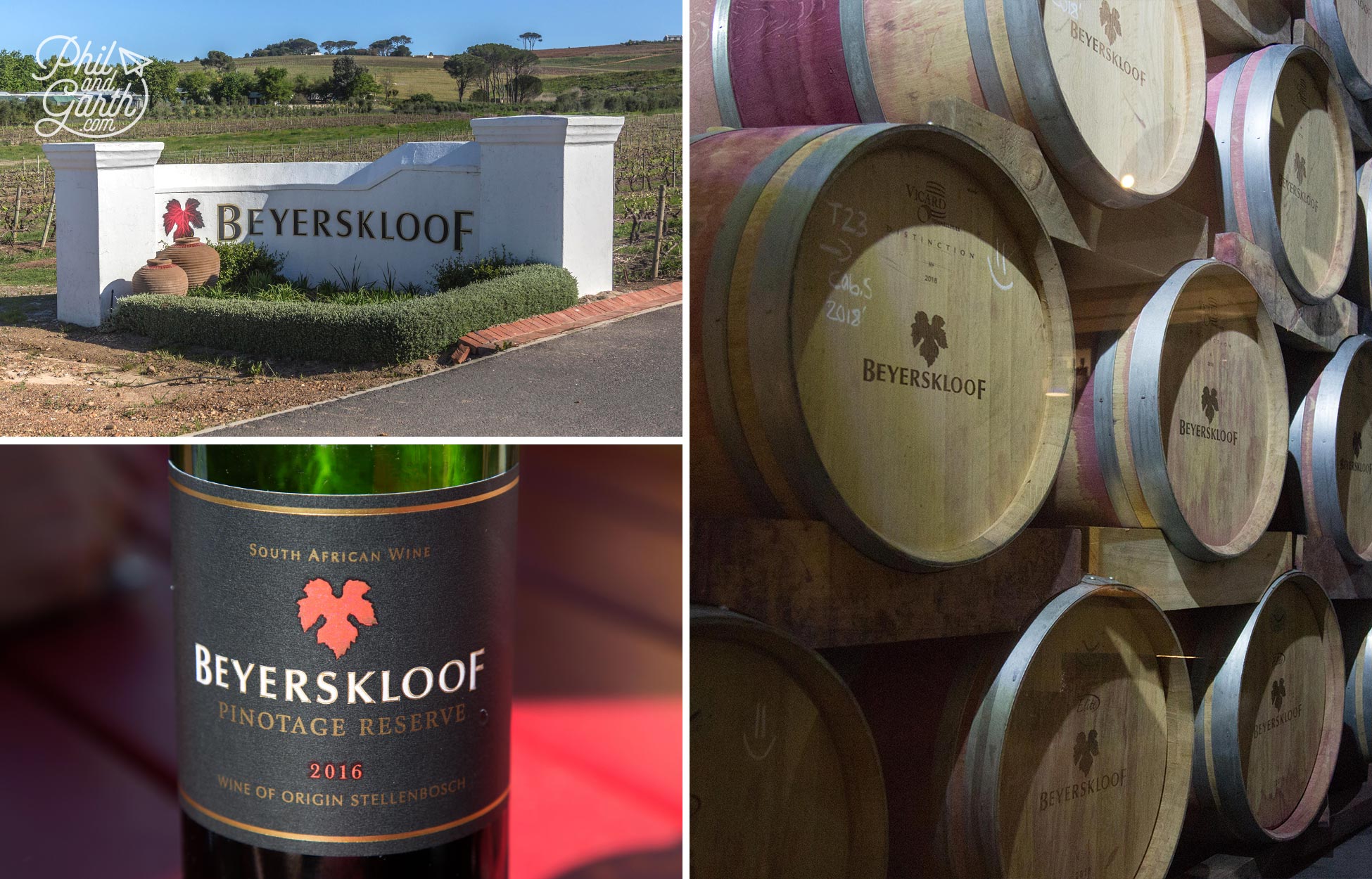
Beyerskloof wine estate
Our second wine testing was at Beyerskloof, certainly not as plush as Tokara, however the front of the bulding has a picturesque view of the sun dappled vineyards set against the mountains. Our waitress was attentive but not that knowledgeable, instead giving us a card with all the information about each wine we would taste. Beyerskloof are famous for their Pintotage (a blend of Pinot Noir and Cinsault grapes, created in South Africa) which we tried, but preferred their really sweet Beyerskloof Field Blend, more like a dessert wine, Garth thought it tasted like port. At Beyerskloof they had a shop so we could buy a bottle, woohoo!
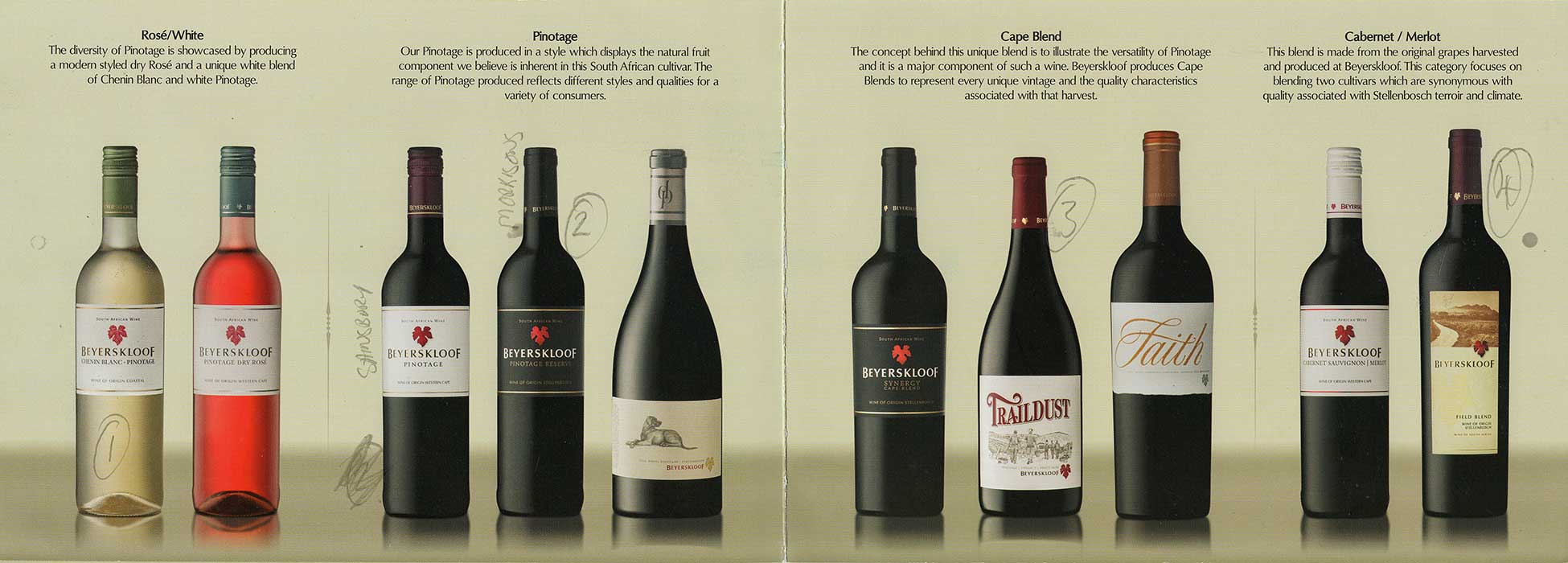
Beyerskloof wines leaflet
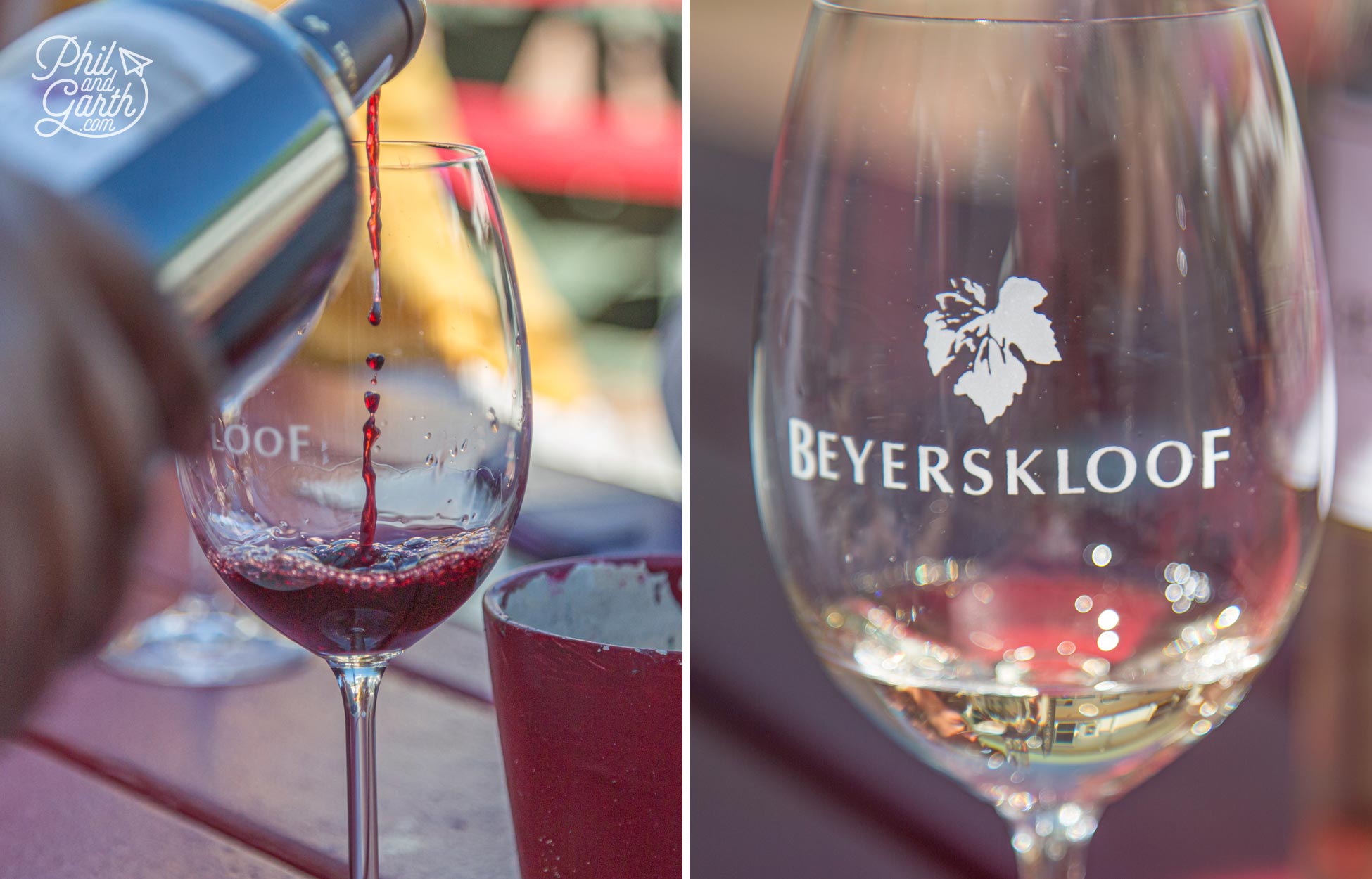
Wine tasting at Beyerskloof
We thought both our wine tastings we great, especially sipping outside in the natural scenery made it very idyllic. It was nice and leisurely too, would have been even better with a nice with a platter of cheese and meats.
Stellenbosch Practical Information & Useful Advice
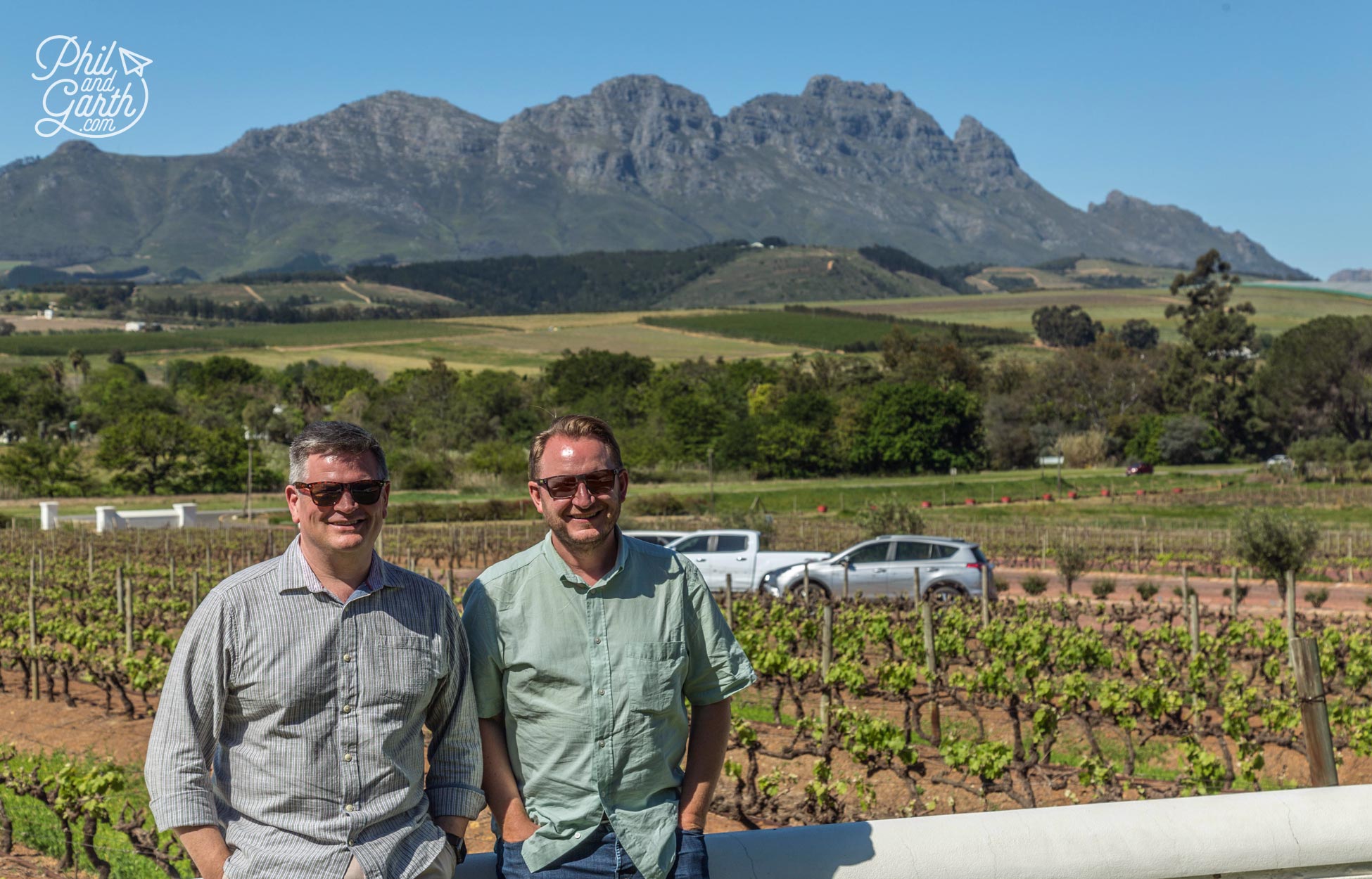
Phil and Garth’s Top 5 Stellenbosch Tips
Phil and Garth’s Top 5 Stellenbosch Tips
- Tip #1: Staying in Cape Town? – Stellenbosch is an easy 45 minute drive away.
- Tip #2: Best time is September to April – it’s warm and dry.
- Tip #3: Consider taking a winelands tour – that way you don’t have to drive.
- Tip #4: Don’t visit more than 3 or 4 wine estates in a day – apparently you stop tasting the difference.
- Tip #5: Buy the 3 round pin plug power adaptor before you go. Many hotels don’t have these for tourists.
How We Did It:
- We booked and paid for a small group tour of South Africa (South Africa Highlights) with Explore.
- We stayed 1 night at The Stellenbosch Lodge, their website here.






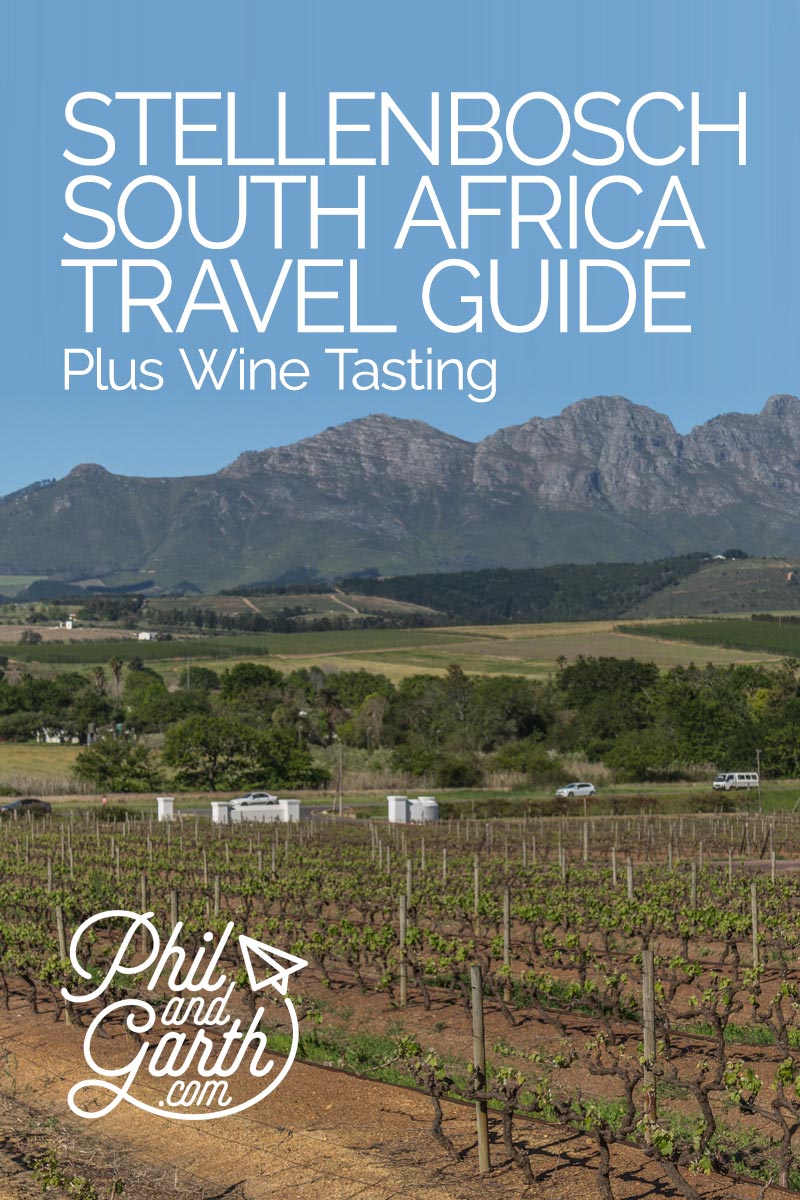

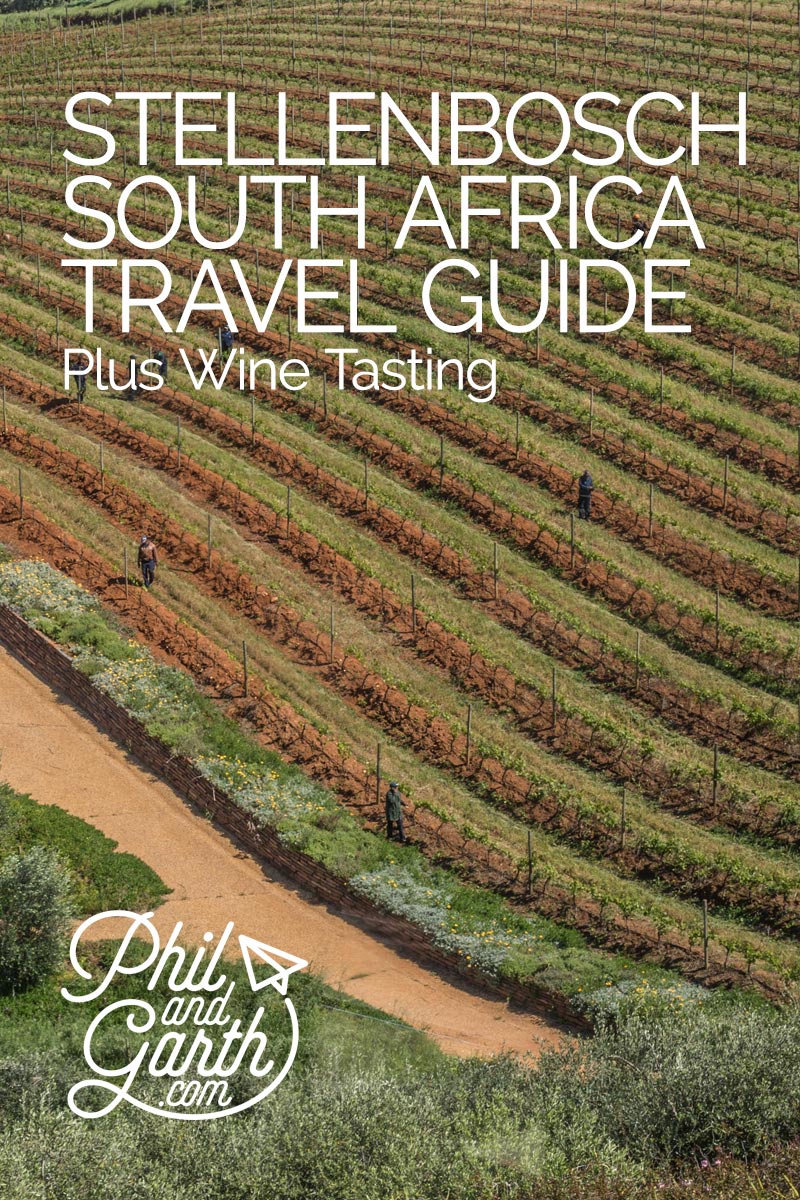
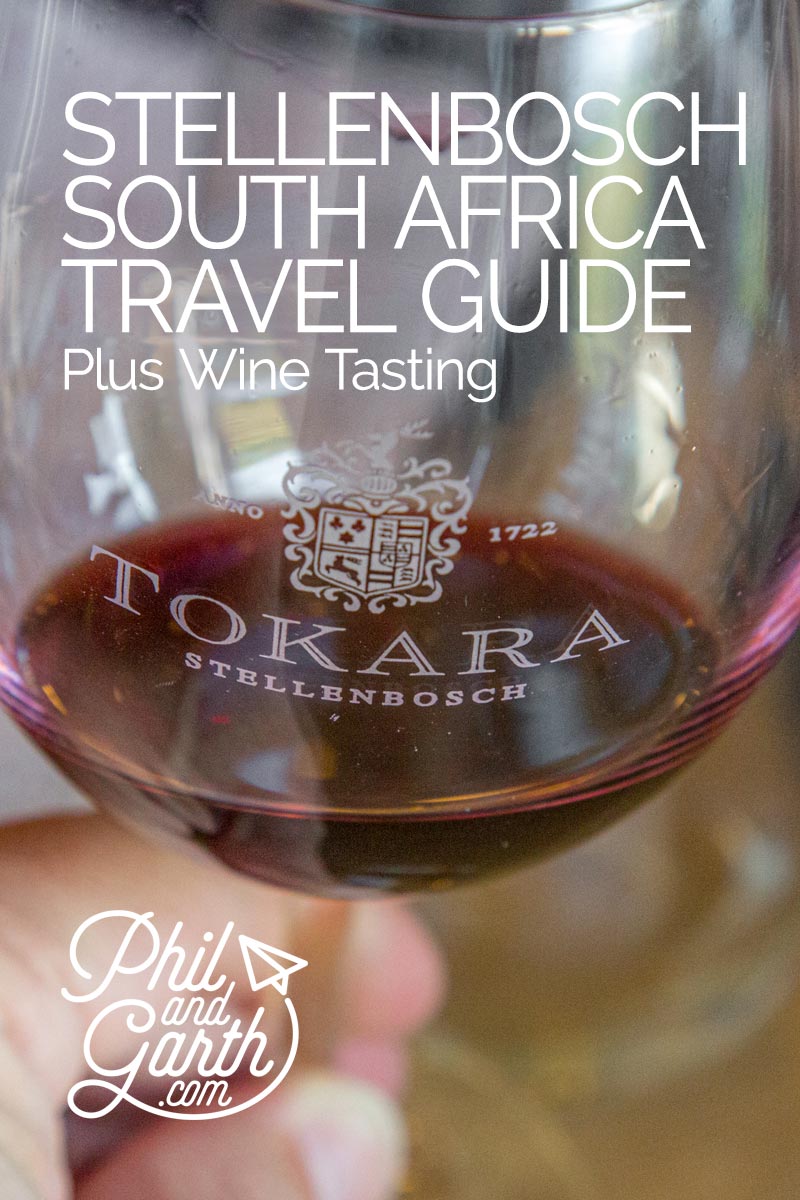
5 comments
Stellenbosch looks like a beautiful little town and the wine tasting looks fun! These are certainly not the images of South Africa I was expecting. #FeetDoTravel
I’ve heard soooo much about this vineyard/region through multiple blogs and even CNN did a special on this region and its wines.I would looove to go and learn about South African wines! #FeetDoTravel
The landscape off the R44 is gorgeous! I would love to look for sharks as long as I’m a good distance away. I don’t drink wine so wine tasting would take my fancy but I love the look at those homes. I’d love to take a peak inside them. #FeetDoTravel
Looking back at your awesome trip, the one thing that stays with me most is that I don’t even want to get in the water if they have to have a sign explaining shark sightings. Nope. I’ll just work on my tan up here on the beach. Maybe with some of that tasty wine you showed us. 🙂 Great post, gents!
Beautiful photos! It looks like a dreamy destination – but then all you have to say is “Wine” and I’m there!